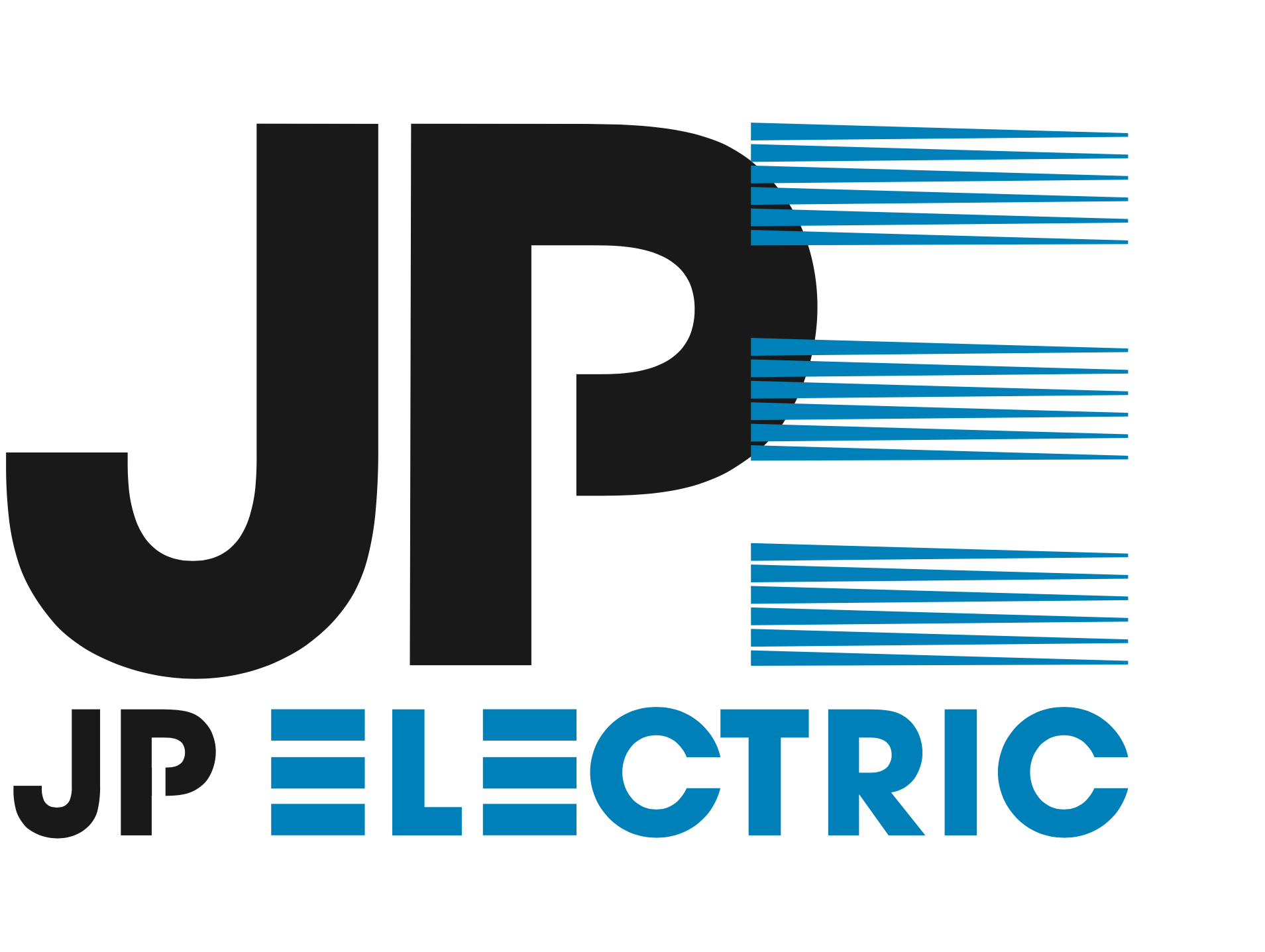Solar Configurations
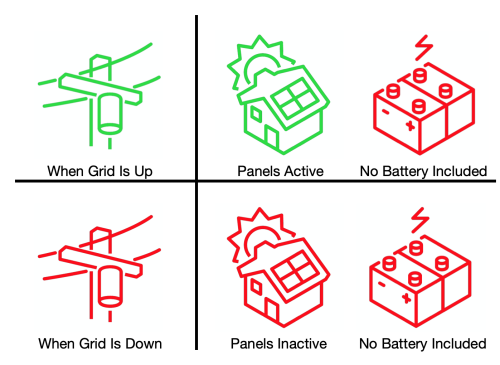
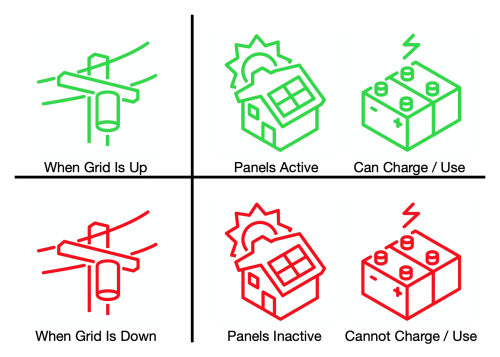
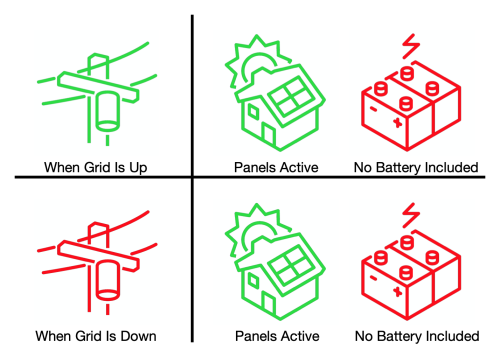
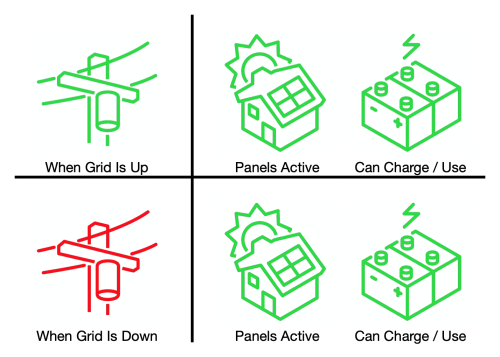
*A solar system’s ability to produce energy throughout the day and (if applicable) provide backup power is contingent upon receiving substantial sunlight and being minimally shaded during daylight hours.
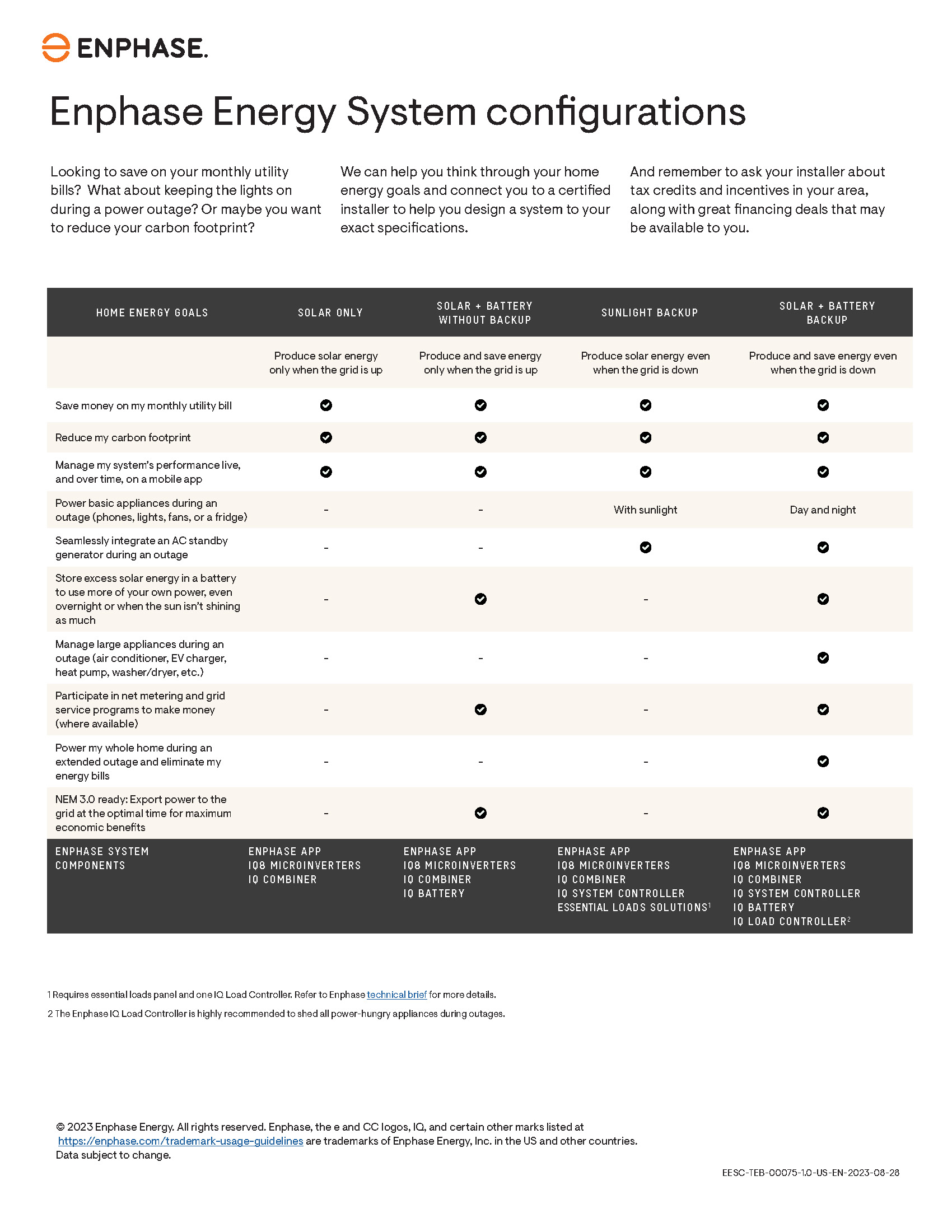
FAQ
What type of solar panels do you install, and what are their specifications?
Q CELLS and REC are our primary panels of choice and have a power output rating of 405-420 watts.
How many solar panels does my home need, and how will they be arranged on my roof?
These are contingent upon the electrical needs of the home and the available surface area of the roof.
Will you install a single-axis or dual-axis tracker system?
Single, fixed mounting is the most cost effective and reliable; therefore, it is always what we install.
What kind of inverter will you use, and what are its specifications?
Enphase IQ Microinverters (one per panel). Specs vary depending on the particular model.
How much energy can I expect my solar panel system to produce, and how will it affect my energy bills?
These are contingent upon the size of the system and the variable of shading (e.g., trees, cloud cover, and other obstructions). The goal is to eliminate the cost of energy that is drawn from the grid. *Note: many utility companies charge an interconnection fee that is mandatory; therefore, excess solar production will not eliminate that fee.
What kind of maintenance is required to keep my solar panel system running efficiently?
Typically nothing. The exception would be panels that are subject to high soiling due to forest fires or dust or are mounted on a low-sloped roof. In such cases, removing debris from the solar panels may be necessary from time to time.
What kind of equipment warranty do you offer?
All roof equipment that we install carries a 25-year warranty (panels, microinverters, and racking). Other Enphase components carry a 5-15 year warranty (specific length of warranty depends on the product). Enphase stands behind its equipment, and will cover the cost of warranty replacement. Physical damage to solar panels (i.e. hail and other environment factors) is not covered and would fall under home owners insurance.
What kind of labor warranty do you offer?
We provide a 10-year warranty on workmanship.
Are there any potential issues that could affect my solar panel system’s performance, and how would you address them?
- Shading caused by trees, cloud cover, or other obstructions
- Grid outages
These issues will be addressed during the initial walkthrough.
Are there any local or state incentives available for solar panel installations?
As of this writing (May 17, 2024), the state of Colorado does not offer any incentives. The Federal government, however, offers a 30% tax credit. *Must confirm eligibility through your certified tax professional.
Can I sell any excess energy back to the grid, and if so, how does that work?
Most utility companies offer net energy metering (NEM): agreements allowing you to offset your power bill with excess solar. There are some exceptions within smaller utility companies.
Will you install a monitoring system to track my solar panel performance?
Yes, always.
What is the total cost of the solar panel system, and what is included in that cost?
This is contingent upon the size of system and the means of installation. Total cost covers all solar equipment, plan engineering, installation, permits, and application fees.
What financing options do you offer?
We have financing partners for solar exclusive loans, but our experience is that home equity is a better mechanism for the loan than a solar exclusive loan.
Do you offer Power Purchase Agreements (PPAs)?
No. We believe it is always in the best interest of our clients to own their own power.
Who will install my solar panel system, and what is their experience and qualifications?
Jeremy walks every job and is directly involved in the installation and layout of the solar array and other equipment.
Will you obtain all necessary permits and inspections for the installation?
Yes.
How long will the installation process take, and what is the typical timeline for completion?
This depends on the county (1 to 2 weeks approval timeline) and the utility company (1 week to 45 days approval timeline).
Will you provide any necessary documentation or certifications for my solar panel system?
All equipment spec sheets will be included with your permit package.
How do you handle repairs and maintenance issues with my solar panel system?
Most issues can be addressed remotely.
What kind of customer support do you offer, and how can I reach you if I have questions or concerns?
We typically respond within 48 hours to any energy performance inquiries. Most can be addressed remotely unless a site visit is required, as directed by Enphase. We would reach out to coordinate that with you, if needed.
